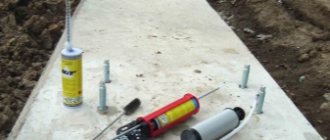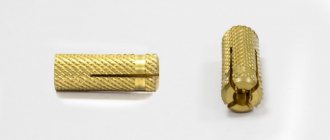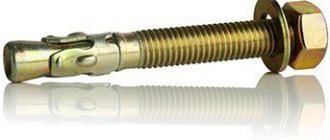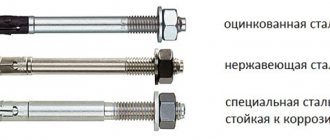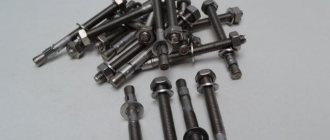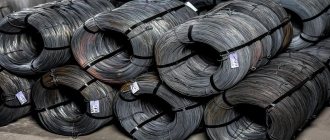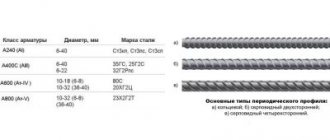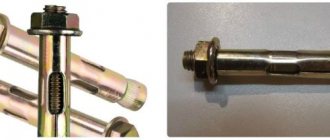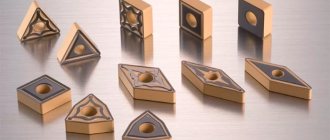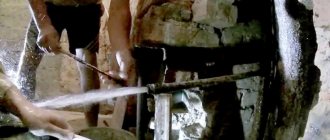The rapid development of construction technologies contributes to the emergence of new building materials and fasteners on the market. One such innovation is the chemical anchor. Although this fastener is not currently widely used, its popularity is steadily increasing.
This type of fastening was originally developed for use in the mining industry. Using chemical anchors, structural elements were fastened to porous and loose rocks that did not have sufficient strength for fastening with metal anchors. The new fastening method turned out to be so effective that it gradually became widespread throughout the construction industry.
This article discusses the principle of operation, main types, advantages, disadvantages and scope of use of chemical anchors. In addition, a list of leading manufacturers and recommendations for independent production of this type of fasteners are provided.
What is a chemical anchor?
A chemical anchor is an innovative fastening system that provides reliable fixation of various elements of building structures in loose, hollow and porous materials. Such materials include:
- shell rock;
- limestone;
- various types of cellular concrete;
- hollow brick.
By themselves, the materials listed above do not have sufficient strength to fasten loaded structural elements, but the use of chemical anchors can solve this problem.
Depending on the material in which one or another structural element needs to be fixed, the chemical composition of the mixture can vary significantly. The exact proportions of the composition, as a rule, are not disclosed by manufacturers, but with a high degree of probability it can be said that the composition of most chemical anchors includes:
- polyurethane, acrylic or polyester resins;
- fine quartz sand;
- cement;
- hardener.
The standard packaging of a chemical anchor resembles a syringe of liquid nails or silicone sealant, but the contents of the container are an effective fastening system that ensures reliable fixation of metal rods in any building material.
Operating principle of a chemical anchor
The principle of operation of the fastening system under consideration is that the working mixture, penetrating deeply into the pores and cavities of the material, hardens and ensures the fixation of metal rods even in cellular concrete and hollow brickwork.
Installing chemical anchors is not particularly difficult. The adhesive mixture is introduced into a pre-prepared hole, after which a threaded rod or conventional corrugated fittings are installed there. The filler tightly envelops the rod and hardens, thereby ensuring its reliable fixation. Depending on the type of chemical anchor, a special dispenser gun or a special capsule may be used to fill the hole with adhesive.
Chemical anchors are significantly superior to conventional anchor systems and dowels in their ability to withstand pull-out loads. The load-bearing capacity of chemical compounds allows the use of this method of fastening when installing balconies, canopies and even bridges, both above and below water.
It is especially advisable to use chemical anchors in cases where neither dowels nor conventional metal anchors are able to guarantee reliable fastening of structural elements to the base. Typically, this situation occurs if the base is a porous or hollow material, for example, shell rock, limestone, gas or foam concrete, cinder block, etc.
When using a fastener element, it must be remembered that the setting and complete hardening of the filler depends on its composition and can range from 5 to 24 hours.
Instructions for use
Even a beginner can use chemical anchors. The work includes drilling a hole, preparing it and filling it with compound, as well as screwing in metal bolts. Installation of fasteners is carried out at a temperature not lower than -5 degrees, or using special frost-resistant compounds.
Rules for drilling and preparing holes
When making holes for a chemical anchor and rod, you need to remember: the higher the load on the structure, the more accurate and better all work must be done. In any case, the hole diameter is made larger than the stud or reinforcement.
Drilling is carried out with a hammer drill with a drill of the required size. For cone-shaped holes, special drills with an oscillating jig are used; for drilling concrete walls, hollow drills are used.
Drill with oscillating jig
The finished hole is thoroughly cleaned of dust, preferably using air under pressure. It is best to use a carbon dioxide cylinder. If it is not available, a regular rubber bulb will do.
Important! After blowing, be sure to clean the hole with a brush and blow through again so that no dust remains inside - this is a very important condition for reliable adhesion of the composition to the base.
Sequence of work when gluing
The ampoule is installed directly into the hole of the structure, the pin is inserted using an electric drill or manually. In porous or hollow materials, a mesh sleeve is pre-fixed, which will allow the composition to be distributed more evenly.
The cartridges are placed in a gun with a guide spout, which will squeeze out the mass under pressure. If the length of the metal pin is more than 50 cm, it must be installed mechanically - using a special jig. The fasteners are left until completely hardened (the time is always indicated in the instructions).
Application area
Let us consider in more detail in which cases it is advisable to use chemical anchors. According to reviews from builders and recommendations from manufacturers, chemical anchors are most often used for:
- arrangement of highways and other road works related to the installation of signs, signs, advertising brochures, etc.;
- installation of ventilation systems on loose, porous and hollow foundations;
- reliable fixation of large metal structures;
- installation of massive advertising structures characterized by increased windage;
- restoration of various types of lifts;
- erection of scaffolding and sheathing;
- restoration of monuments;
- carrying out installation work in port areas and construction of various water bodies;
- installation of funiculars used at ski resorts;
- arrangement of electrical facilities.
In domestic conditions, chemical anchors may be required to attach heavy hanging furniture and interior items to an insufficiently strong base.
Scope of application
A chemical anchor is most suitable for aerated concrete, stone, concrete, and brick (including hollow brick), although it can be used when working with a wide variety of materials.
Important! The use of anchors is especially important in situations where traditional fasteners and dowels cannot ensure a reliable connection. This applies to work with materials such as limestone, expanded clay concrete, cellular concrete, sandstone.
Dowel for aerated concrete
Areas of application of chemical anchor:
- house building – installation of roofing, balconies, building canopies, gazebos, gates;
- fixation of any steel elements;
- installation of handrails in tunnels and other work requiring electrical insulation;
- installation of ventilation systems on weak foundations;
- fastening of large-sized structures;
- arrangement of various underwater structures;
- installation of lifts at ski resorts, advertising elements, scaffolding;
- strengthening the foundation of buildings, connecting to the foundation;
- replacement of reinforcement in critical structures - bridges, stairs, ceilings, support columns, overpasses;
- installation of auxiliary equipment - plumbing, satellite dishes, lights.
Installation of metal structures
The metal fastener itself, suitable for working with a chemical anchor, can be made of stainless steel, carbon or galvanized steel. The composition can be used in conditions of any humidity, including under water.
Types of liquid anchor
As mentioned in previous sections, chemical anchors are typically two-part formulations consisting of synthetic resins and a hardener. The ingredients are mixed immediately before using the anchor. There are three types of packaging for chemical anchors:
- ampoule.
They are a capsule with two compartments, one of which contains the adhesive mixture, the other contains the hardener; - single cartridge.
Inside the cartridge there is a special partition separating the adhesive and hardener; - two-cartridge.
The kit includes two cartridges, one of which contains an adhesive, the other a hardener.
The compositions produced in cartridges work on the same principle, however, to use them you will need various dispensing guns designed to dose the mixture into a pre-prepared hole (hole).
Ampoule anchors
The main feature of such fasteners is that the diameter of the ampoule strictly corresponds to the specific diameter of the prepared hole (borehole). One ampoule is intended to fix one rod (stud, screw, etc.). It is advisable to use ampoule anchors in cases where high accuracy and cleanliness of the hole can be guaranteed.
Capsule anchors are convenient to use because there is no need to control the degree of filling of the hole. Minor differences in the diameters of the hole and capsule are fully compensated by the expansion of the adhesive composition as it hardens.
As mentioned above, the ampoule has two capsules: with an adhesive mixture and with a hardener. The connection of these components occurs by screwing in a threaded metal rod, such as a stud or screw. It should be noted that mixing of the hardener and filler occurs more evenly than when using compounds packaged in one or two cartridges.
The disadvantages of capsule chemical anchors include the inability to use them in a vertical position. This is due to the fact that the filler will flow out of the hole much faster than setting occurs.
Cartridge anchors
As mentioned above, this type of anchor can be placed in one tube, separated by a partition, and in two separate cartridges.
When using one cartridge, the filler and hardener simultaneously enter the cavity of the mixing spout, where they are mixed using a special spiral insert. To work with such anchors, you can use a regular construction dispenser gun.
The two-cartridge system works a little differently. Mixing of components also occurs in a common spout, but they go there separately. To work with such packaging, you will need a special dispenser gun that ensures simultaneous supply of filler and hardener into the mixing spout.
Types of cartridge anchors
All cartridge anchors can be divided into two types:
- universal;
- for fastening metal rods in concrete foundations.
Universal chemical anchors
The popularity of this type of anchor fastening is due, first of all, to its ease of use. During installation work, there is no need to accurately calculate the volume of material required for one fastening.
Anchors designed for attaching metal rods to concrete foundations
Chemical anchors, the main purpose of which is gluing threaded or reinforcing bars into a concrete base, most often have a thick consistency. In addition to the main components, their composition includes corrosion inhibitors and deoxidizers, which significantly increases the reliability and service life of the fastener.
Some types of chemical anchors intended for concrete are used only in combination with special chemicals designed to treat the rods and drilled holes. In addition, special devices may be required to press the rods into the holes.
A significant disadvantage of cartridge anchors is the difficulty of controlling the filling of holes with adhesive. If the amount of working mixture is insufficient, it begins to flow out of the hole if the base is porous or hollow type without waiting for setting.
You can significantly reduce the consumption of filler and achieve its uniform distribution on all sides of the hole by using special mesh bushings. These elements can have different sizes and are selected specifically for a specific mount.
Types of anchors
Chemical anchors for concrete and other materials are sold in two forms: ampoules and cartridges.
Ampoule
Such anchors are produced for screws of a certain diameter. That is, each fastening point needs its own ampoule - a glass capsule with one-component content or two ampoules with an adhesive and a hardener.
The ampoule is inserted into the hole, after which a metal fastener is inserted, which breaks it. The glue flows out and sets, and the glass shards only help to strengthen the bond.
Capsule Type Chemical Anchor
Typically, ampoule anchors are used where particular precision of the joint is important. It is convenient to work with them, because there is no need to monitor the filling of the hole.
Important! This type of glue is not suitable for vertical structures made of cellular material. The composition will flow down before it hardens.
For the same reason, an ampoule chemical anchor is not suitable for bricks with holes: it is only suitable for solid building materials.
Cartridge
Cartridge anchors are also called injection or injection compounds. They are sold in the form of a volumetric cartridge with a pair of compartments that are filled with different compounds (resin and hardener).
Also on sale are products from two cartridges, the mass of which is mixed in a special gun. Most cartridge anchors are universal, but special compounds for concrete are also available.
Cartridge with two components of the composition
To perform fastening work, put a mixing spout on the cartridge, then insert it into the gun and perform all the necessary actions. This type of chemical anchor is suitable for use on hollow materials.
Before filling, a metal sleeve or plastic sleeve is inserted into the drilled hole so that the composition does not fill large voids in the base. The disadvantage of cartridge anchors is the risk of using too much.
Advice! To reduce consumption, mesh bushings are used, which are selected according to the size of the holes.
Advantages and disadvantages
Like any other elements of building structures, chemical anchors have their advantages and disadvantages. To avoid unpleasant moments during installation and operation, it is necessary to take into account both the positive and negative features of this type of fastening.
The undeniable advantages of chemical anchors include:
- complete sealing of the hole after installing the rod;
- No tensile stresses in the concrete base.
- Versatility and wide scope of application;
- ease of installation. Installing a chemical anchor does not require experience or special skills;
- high strength characteristics of the anchor fastening after its complete polymerization. In this indicator, chemical anchors are significantly superior to metal anchors and dowels with a plastic sleeve;
- ability to withstand significant mechanical loads and tensile forces. In other words, the fastening element has a high load-bearing capacity;
- chemical anchors are not susceptible to external atmospheric influences, corrosion processes, or the effects of aggressive chemical compounds;
- special chemical anchor compounds can be used in conditions of high humidity and on waterlogged surfaces; in addition, installation of underwater structures is quite acceptable;
- the service life of such fastenings is comparable to the durability of the base itself and is usually at least 50 years;
- There are adhesives that do not contain any toxic compounds. It is advisable to use such fastenings for interior work. When purchasing chemical anchors, you need to make sure that the mixture is environmentally safe;
- The thermal expansion coefficients of fasteners and base materials are approximately equal. This eliminates the occurrence of additional internal stresses during sudden temperature changes.
Along with the above advantages, when starting to use, you should keep in mind the following disadvantages:
- Unlike metal anchors and dowels, chemical anchors require quite a long time until the installed anchor is fully ready to bear the load. The time for complete polymerization of the fastener depends on the ambient temperature:
— at a temperature of +200C, the time for complete polymerization will be from 25 to 40 minutes; will be 25÷40 minutes;
— at 50C this period will be 6 to 7 hours;
- with a further decrease in temperature, the polymerization process may stop altogether.
- Limited shelf life of unopened packaging. When packaged, the composition can be stored for no more than 1 year;
- Once the package is opened, its shelf life is significantly reduced. Based on this, it is necessary to plan installation work in such a way that the packaging is completely consumed at one time. In other words, it is not practical to print packaging for one or two mounts. In this case, ampoule anchors can come to the rescue;
- The high price sharply reduces the demand for this type of fastening.
Cost and main features of Hit Re 500 liquid anchor from the manufacturer Hilti
The above-mentioned liquid anchor, the price of which is 2200 rubles. per package, excellent for holes that have an impressive diameter and depth, and were made using diamond technology. The material is reliable and high quality. It is capable of withstanding impressive loads and allows the installation of studs with a diameter exceeding M24.
There are no stresses in the concrete, this reduces the interaxial distances and the step to the edge. The anchor is flexible and can be used even in wet holes without reducing adhesion. The packaging has an economical dispenser, so you don’t have to put in much effort when injecting. The volume of construction waste is reduced thanks to unique packaging. The composition does not have a strong odor, so it can be used even indoors. Installed reinforcement and studs can be monitored thanks to the red color of the mixture.
Types of guns for chemical anchors
The use of a cartridge chemical anchor is impossible without the use of special dispensing guns. If the material is packaged in one tube, there are no problems: you can use a regular mounting gun. If the filler and hardener are in different tubes, you cannot do without a dispenser gun of a special design, which ensures the simultaneous supply of ingredients into the mixer spout.
In order to effectively use the dual cartridge dispenser gun, some practical skills will be required. First of all, it is necessary to be able to determine with a high degree of accuracy the required volume of anchor mixture. It depends on several factors:
- diameter of the fixed rod;
- hole depth;
- the presence of a mesh sleeve;
In addition, it is necessary to take into account possible losses of the adhesive mixture during the installation process.
The cost of a dispenser gun for chemical anchors can range from 1,300 to 7,000 rubles. The most expensive and versatile models from Hilti can be used at any ambient temperature. Models are distinguished by a wide selection of dispensers; in addition, the kit may include mounting rods.
Fisher pistols are a budget modification of the tool, and are usually used when carrying out repair work on a small scale.
Models from BIT United Ltd. have gained wide popularity among ampoule automatic dispensing guns. The main advantage of this tool is its affordable price, which, depending on the configuration, can range from 700 to 1000 rubles.
Selection rules
Before purchasing, it is important to carefully read the instructions for the chemical anchor. Manufacturers always indicate the types of structures and base materials to which this or that composition is suitable.
It is equally important to take into account the temperature conditions when working with the product, permissible loads on the structure, and possible humidity range. In addition, the anchor must meet the conditions of use according to the following indicators:
- types of fastening;
- fastener placement options;
- dimensions of metal rods;
- hole depth;
- curing speed;
- the need for a mesh sleeve.
For cartridge anchors, you will have to additionally buy a special dispenser gun, which is capable of mixing two components of the composition and dispensing them into a special spout. The price of such a product varies from 1300 to 7000 rubles.
Advice! Ampoule guns are cheaper - from 700 rubles, although you can use a regular drill instead.
How to choose a chemical anchor for aerated concrete, concrete and brick
Depending on the base material, different anchor mixtures are used. It is extremely important to ensure that the chemical composition of the anchor matches its characteristics and operating conditions. In order to accurately select a material, before purchasing it, you should carefully study the instructions included with it or located on the packaging. This document contains all the necessary information.
Most well-known manufacturers indicate in their recommendations the types of structures and materials for their manufacture, the optimal location of mounting holes and their sizes, the method of fastening, the range of humidity and temperature, as well as permissible loads for various bases. In addition, it is necessary to take into account possible limitations on operating conditions and the rate of polymerization of the mixture - this is of particular importance for chemical anchors with atmospheric polymerization.
The best manufacturers
Currently, several well-known companies occupy leading positions in the chemical anchors market. Below is a list of these companies and the technical characteristics of their products.
| (Germany) | ||
| R.M. | “Reaktionsanker” is an ampoule with an adhesive mass, inside of which there is a compartment with a hardener. The manufacturer produces ampoules of different sizes - M8 (10×80), M10 (12×90), M12 (14×110), M16 (18×125), M20 (24×170), M30 (30×280). | |
| FHP | “Hammerpatrone” is an ampoule with glue and hardener for installing metal elements into a concrete base. Produced in the following sizes – 10 (13×90), 12 (15×110), 16 (18×125), 20 (24×180). | |
| FIS V 360S | “Injections-Mortel” Double cartridge, requires a special gun to operate. Main cartridge with a volume of 360 ml and two mixers. | |
| FIS VS 150 | "Injections-Mortel" One standard size cartridge. To work, you will need a regular construction gun for standard cartridges. The kit includes a 150 ml cartridge, two mixers and an adapter. | |
| (Liechtenstein) | ||
| HVU | "Adhisitive Capsule Anchor". Ampoule with methacrylic polyurethane resin, quartz sand and hardener. Capsules have the following volume: M8 (10×80), M10 (12×90), M12 (14×110), M16 (18×125), M20 (24×170), M30 (30×280), M33 (37 ×300), M36 (40×330), M39 (42×360). | |
| HIT-HY150 | "Fast Curinq Injection System". These are two dual cartridges with acrylic resin and hardener. A special gun is required for operation. Cartridge volume 330 ml and two hardeners, HIT-HY20 has one hardener. | |
| HIT-HY20 | ||
| (Switzerland) | ||
| MSP | "Schlagpatrone". Ampoules with resin and hardener. Capsule volume: M8 (10×80), M10 (12×90), M12 (14×110), M16 (18×125), M20 (24×170). | |
| MYA | "Verbunanker". Ampoules with two components. Volume: M8 (10×80), M10 (12×90), M12 (14×110), M16 (18×125), M20 (24×170), M30 (30×280). | |
| MIT-P | One cartridge. A standard construction gun is used for the job. Cartridge volume 150 ml, two mixers. | |
| MIT-P | Double cartridge. Set: 235 ml and two mixers. | |
| MIT-SF | Double cartridge. Volume 380 ml and two mixers. | |
| (Finland) | ||
| KEM | “Kemiallinen ankkuri” – ampoules with polyester resin and hardener, volume M8 (10×80), M10 (12×90), M12 (14×110), M16 (18×125), M20 (24×170), M30 ( 30×280). | |
| KEMLA | “Kemiallinen lyontiampulli” – ampoules with polyester resin and hardener, volume M8 (10×80), M10 (12×90), M12 (14×110), M16 (18×125), M20 (24×170). | |
| ITH | "Injektointitekniika". Cartridge with injection mass based on polyester resin, volume 380 and 150 ml | |
| (Germany) | ||
| TVA | "Verbund-Anker". Ampoules with resin and hardener volume M8 (10×80), M10 (12×90), M12 (14×110), M16 (18×125), M20 (24×170), M30 (30×280). | |
| THP | "Hammerpatrone". Ampoules with resin and hardener, volume M8 (10×80), M10 (12×90), M12 (14×110), M16 (18×125), M20 (24×170). | |
| TVM-K | "Verbundmortel". Cartridge with injection mass, volume 380 and 150 ml. | |
Is it possible to make a chemical anchor yourself?
Factory-made chemical anchors are quite expensive and also have a limited shelf life, especially after unpacking the cartridge. Meanwhile, it is quite possible to make a chemical anchor yourself at home.
The composition is made on the basis of epoxy resin. The physical and technical characteristics of this component fully ensure excellent adhesion to shell rock, limestone, brick, concrete and many other materials. Thanks to these properties, epoxy resin may well become the main component of a homemade chemical anchor.
To make liquid fasteners at home you will need:
- epoxy resin ED-20;
- hardener UP-583;
- Cement or plaster. A small amount of fine quartz sand can be used as a filler;
- Plasticizer DBP or DEG-1.
The preparation of the mixture consists of several stages:
- A plasticizer is added to the epoxy resin in a volume of 5 to 10% of the resin volume, after which the resulting mixture is thoroughly mixed.
- After this, filler (cement or gypsum) is added to the resulting composition. The resulting substance is mixed until a homogeneous mass without lumps is obtained. The amount of filler also ranges from 5 to 10% of the total volume of the mixture.
- The last step is to add hardener in a ratio of 1:10 or 1:8. The rate of polymerization of the composition and its strength will depend on the amount of hardener.
After thorough mixing, a ready-to-use mixture is obtained, which must be processed immediately after preparation. The setting time of the mixture is 1-2 hours, depending on the ambient temperature. Complete polymerization of the composition can last from 12 to 24 hours. The use of a plasticizer allows you to extend the life of the mixture, and the use of gypsum as a filler, on the contrary, speeds up the setting process.
How to use a chemical anchor
To use a chemical anchor, no special knowledge or practical skills are required. The procedure is quite simple and straightforward.
If an ampoule anchor is used, the ampoule should be placed in the hole and split with a metal rod. As a result, the components mix and harden.
When using the substance in cartridges, the required amount of adhesive mixture is squeezed into the cleaned hole, after which a metal rod is installed. After the time specified in the technical specifications, the mixture completely hardens, thereby ensuring reliable fixation of the rod.
How can I replace a chemical anchor?
Considering the high cost of chemical anchors, the question often arises: what can replace them. It is indeed possible to replace the factory chemical version, but it is necessary to take into account the base material.
For heavy concrete, a classic metal anchor is best. To be fair. It should be noted that such bases do not really need liquid fasteners at all.
When it comes to cellular concrete, a homemade epoxy resin-based anchor can be a good alternative to a factory-made chemical anchor. In addition, the use of drywall adhesive and some other gypsum-based mixtures gives good results. To achieve maximum fastening strength, holes should be drilled in the shape of a reverse cone.
Despite their high cost, chemical anchors are increasingly used to fasten building structural elements to loose, porous and hollow substrates. In terms of their strength characteristics, such fastenings are significantly superior to conventional metal anchors and dowels with plastic sleeves, especially when fastening to weak foundations.
Pros and cons of chemical anchors
The building composition has many positive characteristics:
- absolute tightness of the attachment point;
- absence of tensile loads, which is especially important for concrete foundations;
- versatility, ability to operate in various areas of construction and repair, suitability for any materials;
- ease of use, no need for special knowledge and skills;
- the highest strength after final hardening - an indicator greater than that of conventional metal anchors and dowels with a sleeve;
- significant load-bearing capacity, tolerance of serious mechanical loads, regardless of the type of base material;
- resistance to chemicals, corrosion, and negative atmospheric factors;
- Possibility of use at high humidity, under water;
- long service life - up to 50 years;
- absence of toxic compounds (not in all formulations), suitability for indoor use;
- approximate equality of the coefficients of thermal expansion of the composition and most building foundations, which reduces the risk of internal stresses during temperature fluctuations.
Advantages of a chemical anchor over a conventional one
The disadvantages of chemical anchors include a rather long time until complete polymerization and readiness to absorb maximum loads. So, at a temperature of about +50 degrees this time will be 5-7 hours, and at ordinary room temperatures it will be much longer.
During the cold season, the curing process may stop altogether. The shelf life of such formulations is limited - it makes no sense to use them 12 months after production, even if the packaging was sealed.
After opening, you will have to use the product in one go, so for the sake of a couple of fastenings it is better to buy ampoule anchors. The price for this type of fastener is quite high, which repels some buyers.
